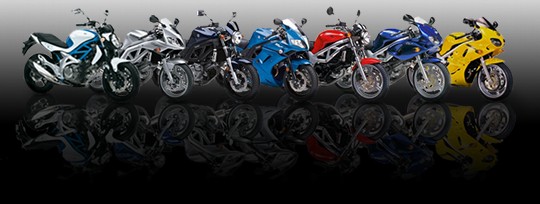 |
 |
|
|
#111 |
|
Guest
Posts: n/a
|
Couldn't have said it better myself!
|

|
|
|
#112 |
|
Guest
Posts: n/a
|
ok thanks for that keith.
In what situation would you have to be to use 4000 of a sec? pics of the sun? |

|
|
|
#113 | |
|
Guest
Posts: n/a
|
Quote:
Let's take the old "sunny 16" rule, which states that in a sunny cloudless day when you're shooting something in full sunlight (with the sun to your back), your shutter speed will be close to 1/ISO (rounded to full stops). So you take your D90 at base ISO, which is 200, and the rule tells you that at f/16, your shutter speed should be 1/250s (try it out when you get a sunny day, set your camera to manual, plug in these numbers and shoot a pic). Now when you start opening up your aperture to, let's say, f/5.6, if you do the maths you get 1/2000s (this is the close cousin to the "sunny 16" rule, some call it the "fast f/5.6" rule: for the same conditions, sunny day, full frontal light, an aperture of f/5.6 will give you a shutter speed of 1/(ISO x 10), for when you need to stop action). Open up another stop for f/4 and you get your 1/4000s, on a pretty normal picture. That will be as wide open as you can go with the 18-105 kit lens (okay, f/3.5 on the wide end, but that doesn't really count), but if you take into account that most pro zoom lenses will go to f/2.8, then you're already at 1/8000s which the D90 doesn't even do. Grab a fast f/1.4 prime lens and you'd need 1/32000s in the same conditions! Fast shutter speeds of 1/1000s and faster are very useful to stop action, and the faster the speed, the sharper the shot can be. With fast moving stuff, it doesn't really matter how steady you can hold your camera or if your lens has VR: it's all about shutter speed*. *or flash, but that's a whole another chapter |
|

|
|
|
#114 |
|
Member
Join Date: Jun 2007
Location: South West London
Posts: 531
|
OK, so as we're heading toward flashes now - how does the Nikon Guide Number system work?
And how does this change things with a variable zoom flash like the SB-600 which ranges from 14-85mm? |
|
|

|
|
|
#115 | |
|
Guest
Posts: n/a
|
Quote:
Well here we go, I'll try to keep it simple: The Guide Number is a single number measure of a flash's maximum power output, expressed either in meters or feet for a given film speed. A flash with GN36 @ISO100 is more powerful than another one with GN19 @ISO100, for instance (as long as you're comparing the same units). It's derived from this expression: GN = distance x aperture What this means is that for a distance of, say, 4 meters and a flash with GN36 @ISO100, a full power pop will give you a correct exposure at f/8 and ISO100. The same way, at 8 meters you need to be at f/4 to obtain the same exposure. In essence it's as simple as this. And then you get the other variables thrown in... ... like ISO. Just like available light, flash exposure is also affected by ISO. This means that our imaginary flash with GN36 @ISO100 now has a GN50 @ISO200 (the 41% increase Keith was talking about, or multiplying the number by the square root of 2 = approx 1.41)). At ISO400, the GN doubles and is now GN72 (another 41% increase from ISO200). If you plug figures into the above formula you now get 4 meters @ f/16 @ ISO400, for instance. ... and zoom head position. Most add-on flashes come equipped with a fresnel head that allow you to disperse or concentrate the light in a wider or narrower pattern* to match your lenses field of view. What this means is on a wider zoom setting (like 24mm) it'll have to spread the available power to a wider area than on a narrower beam setting like 85 mm. This translates to an effective GN variation, becoming lower at wider settings and higher at narrower beam settings. For instance, our example GN36 @ISO100 flash is only rated for GN36 at the 50mm beam setting. If you go to 24mm, the GN drops to GN26, and at 85mm it'll go up to GN40. Usually 24mm is the wider it'll go on it's own. When you need to go wider, some flashes have a built-in panel you pull over the flash lens to help disperse light even further. Of course having another element in the light path will knock the output down even further, so in our example flash the GN will drop to 14. If you take our example 4 meter distance, we're now talking f/3.5 @ISO100 to get the correct exposure. Go to 8 meters and you'll need f/1.8... or an ISO bump! Manufacturers usually provide a table with the GN for every zoom setting and power level, and in the films days before TTL became rule and manual was all you had, photographers used to carry these printed tables around and had to refer to them in the field to make sure their exposures were right. TTL kind of negates the need for the tables because the camera will do all the calculations for you, but it's still useful to at least know the standard GN number of your flash so you know if it'll have enough power for any given situation. Be careful when you compare different flashes though, as manufacturers will try and make their flashes look good in all sorts of ways. With GN it's all too easy to do, and sometimes you need to look at the full GN table to make sure you are comparing the same values. As an example, take these 2 GNs: GN30 @ ISO100 @ 35mm. GN50 @ ISO200 @ 50mm. Which one is the most powerful flash? While you can convert the ISO rating to match (just multiply / divide by 1.41) you can't do anything about the zoom head position but check the manufacturers table, as they all vary a bit. And btw, that's the same flash. *look at your flash head while you play with the zoom setting and you'll see the bulb come forward at the wide setting and start pulling back into the head as you zoom to narrower beam settings. This is the reason why the Nikon SB900 is a behemoth of a flash: it'll narrow it's pattern to a 200mm coverage, so it really needs a long tube to be able to achieve this. |
|

|
|
|
#116 |
|
Guest
Posts: n/a
|
... and as if the above wasn't enough, this is only valid for straight flash. The moment you bounce it or use diffusers, all bets are off.
If you have a perfect reflecting surface (without any kind of light loss whatsoever) to bounce it off, the GN expression is still valid, you just need to use the bounce distance instead of the straight line distance to your subject (I hope your math / trig skills are up to scratch GN36 = 5.6 meters x aperture <==> aperture = f/6.4 Of course the real world is a funny place and there's no such thing as a perfectly polished metal reflecting ceiling, so you can count on losing a lot more light than that... Slap a diffusing surface between your flash head and your subject and you lose even more light. If you use standard products like softboxes most manufacturers will tell you what the light loss is (measured in stops). Take a softbox with a 2 stop light loss, and the same (straight flash) example will now be: GN36 = 4 meters x aperture - 2 stops <==> aperture = f/8 - 2 stops = f/4 HTH If you really want to go into the world of flash, go here and here. Be prepared to say goodbye to all your disposable income, though... Last edited by Filipe M.; 09-02-11 at 11:30 AM. |

|
|
|
#117 |
|
Guest
Posts: n/a
|
One of the main reasons i went with Nikon was the CLS flash system i heard so much about. Has served me well and has been a whole lot of fun learning (still on going).
Just had to get a small flash for my Canon G12.....bouncing to avoid hars shadows and spreading light evenly makes all the difference |

|
|
|
#118 | |
|
Guest
Posts: n/a
|
Quote:
|
|

|
|
|
#119 |
|
Member
Join Date: Jun 2007
Location: South West London
Posts: 531
|
Thanks Filipe, but I was actually hoping for a bit more than that.
So basically the upshot is that it's good to have an understanding of the Guide Number system, but modern cameras and flashes using (i)TTL do all that for you? On the Nikon CLS, I really like the simplicity of the whole system. I use my SB-600 off the camera more often than on the camera. That doesn't mean I'm any good at it, but it is a lot of fun. I do now need another two flashes and a whole lot of gels for proper experimentation, but that will have to wait a little while. In the pic of the Nikon F, above, the flash was off to the right facing the lens of the subject. Some of my other CLS attempts here, here and here. And my very first attempt here. |
|
|

|
|
|
#120 | ||
|
Guest
Posts: n/a
|
Quote:
Quote:
And yes, a couple more SB600/700/800/900 would be extremely welcome, but right now I'd settle for a a couple of cheap manual jobbies I could trigger with optical / radio slaves, but even those will have to wait a bit. Btw, if you want to pick up a really good book on the subject of light, try this one. It's not exactly cheap, and it's not specific to flash, but it's one of the best books ever on lighting for photography. |
||

|
 |
|
|
 Similar Threads
Similar Threads
|
||||
| Thread | Thread Starter | Forum | Replies | Last Post |
| Photo Comp - Chat Thread | 5hort5 | Photos | 1254 | 15-06-20 04:13 PM |
| Regulator chat thread. | 5hort5 | SV Talk, Tuning & Tweaking | 98 | 13-07-16 10:04 AM |
| welsh TT weekend away (take 2) Banter / Chat thread | hovis | South & West Surfers | 452 | 13-10-09 04:00 PM |
| North Wales Rideout #4 thread - Please use this for chat | Luckypants | The Border Patrol | 287 | 26-11-08 09:44 AM |
| Booking chat thread. | rictus01 | 2007 Annual Rideout | 110 | 27-06-07 02:15 PM |